s
Anthurium – Flamingo Lily
Anthurium, commonly known as Flamingo Lily or Painter’s Palette, is a stunning tropical plant renowned for its vibrant, heart-shaped flowers and glossy foliage.
Origin and Taxonomy:
Anthurium plants are native to the tropical regions of Central and South America, primarily found in countries such as Colombia, Ecuador, and Venezuela. They belong to the Araceae family and are part of the Anthurium genus, encompassing over 1000 recognized species.
Flower Characteristics:
Anthurium plants are best known for their striking flowers, which come in various colours, including red, pink, orange, white, and green. The flowers have a glossy, heart-shaped spathe surrounding a finger-like spadix. The unique flower structure adds a touch of elegance and beauty to any space.
Foliage:
Aside from their exquisite flowers, Anthurium plants also showcase lush, glossy foliage. The leaves are typically broad and leathery, with a rich green colour that enhances the plant’s overall aesthetic appeal.
Light Requirements:
Anthurium plants thrive in bright, indirect light. They prefer a balance between light and shade, as excessive direct sunlight can scorch the leaves. Place them near a window with filtered light or provide artificial lighting if necessary.
Watering Needs:
Anthurium plants have moderate water requirements. They prefer a consistent level of moisture but should not be overwatered. Allow the top inch of soil to dry out slightly between waterings, and ensure proper drainage to prevent waterlogging and root rot.
Soil Requirements:
Anthurium plants thrive in well-draining soil that retains moisture without becoming waterlogged. A mixture of peat moss, perlite, and orchid bark provides an ideal growing medium for these plants. Avoid heavy or compacted soils that can retain too much moisture.
Temperature and Humidity:
Anthurium plants prefer warm temperatures ranging from 60°F to 80°F (15°C to 27°C). They are sensitive to cold drafts and temperature fluctuations, so keeping them in a stable environment is essential. These plants also appreciate higher humidity levels, which can be achieved through misting or using a humidifier.
Fertilization:
Anthurium plants benefit from regular fertilization to support healthy growth and vibrant blooms. Use a balanced, water-soluble fertilizer formulated for flowering plants, and follow the instructions provided by the manufacturer. Apply the fertilizer during the growing season, usually from spring to early autumn.
Propagation:
Anthurium plants can be propagated through division or stem cuttings. Division involves:
- Separating the plant into smaller sections.
- Ensuring each section has roots and foliage.
- Replanting them individually.
Stem cuttings can be rooted in a well-draining potting mix or water until roots develop.
Common Pests and Diseases:
Anthurium plants are generally resilient against pests and diseases. However, they occasionally face issues with aphids, mealybugs, or fungal infections. Regularly inspect the plant for signs of infestation or disease and take appropriate measures to control and treat them.
Air Purifying Qualities:
It is one of the best houseplants in your home because it tops NASA’s air-purifying plant list. It effectively removes harmful chemicals like ammonia, toluene, xylene and formaldehyde.
With their stunning flowers and glossy foliage, Anthurium plants bring a touch of tropical elegance to any indoor or outdoor space. Enjoy the beauty and charm of these Flamingo Lilies as they thrive and flourish in your home or garden.
Things to know about ANTHURIUM
Common (vernacular) Name
एन्थूरियम (Hindi), Anthurium, Flamingo Lily, Flamingo Flower, Painter's Palette, Lace Leaf, Pigtail Plants, Tail Flower and many more.
Botanical Name
Anthurium Andraeanum
Origin
Mexico to Tropical America (Colombia, Ecuador).
Family
Araceae
Plant Type
Tropical plant
Plant Features
Ornamental / Evergreen / Exotic
Life Cycle
Perennial
Landscape Uses
Container Planting and Houseplants.
Species
Belolonchium, Calomystrium, Cardiolonchium, Chamaerepium, Cordatopunctatum, Dactylophyllium, Decurrentia, Digitinervium, Gymnopodium, Leptanthurium, Pachyneurium, Polyphyllium, Polyneurium, Porphyrochitonium, Schizoplacium, Semaeophyllium, Tetraspermium, Urospadix, Xialophyllium.
Varieties
It comes with thousand of different varieties in a diversity of leaf and flower colorations. Some famous verities are available in a myriad of colours and exotic variegation, such as Temptation, Tropical Red, Red Dragon, Verdun Red, Flame, Mauritius Red, Mauritius Orange, Peach, Casino, Sunshine Orange, Nitta, Acropolis, Linda de Mol, Mauritius White, Lima, Manoa Mist, Abe Pink, Candy Stripe, Passion, Midori, Esmaralda, Titicaca, Jewel, Akapana, Cardinal, Fantasia (cream with pink veins), Chocos, Chicos (chocolate brownish red), and many more.
Size
Height : 1 to 1.5 feet tall and Width : 1 feet wide when mature.
Indoors or Outdoors
Outdoors : Anthurium can be used outdoors in shady plantings, avoid direct sun light.
Indoors : Excellent plant grow in bright light or indirect light. Best indoor plants for beginners.
Blooming / Flowering
Blooming period is throughout the year.
Flower Colour
It’s come with a contrasting spadix Gold, Yellow, Orange, Pink, White, Green, Purple, Red, Burgundy, Multicolored and Variegated colours.
Lucky Plant
According to Feng Shui, It bring Good Luck in your relationships.
Lighting / Sun Exposure
Bright Indirect Sunlight.
Temperature
Grow best preferably warm temperature above 21°C and can be tolerate max temp. as high as 32°C.
Growth Rate
Anthurium is a slow to moderate growers plant.
Watering
Moderate watering, Mist or over head sprinkler to provide water and to improve relative humidity. Not tolerate overwatering it may cause root damage and yellowing of the leaves.
Fertilizer
Slow-release fertilizer, or a water-soluble liquid fertilizer once or twice in the growing season (Spring through Summer).
i.e. - Cow dung, DAP, Compost, NPK 30-10-10 fertilizer, liquid organic fertilizer etc.
Pruning
Pruning of Anthurium not much is needed. However, trimming away only discolored or dead leaves.
Propagation
Seeds : The best time to sow your Anthurium seeds is in the end of Winter / early Spring but it can't can give good result.
Stem Cuttings : The easier methods of propagation of Anthurium in water or in soil via stem cuttings, and can be done during the warm growing season.
Division : Division of Anthurium can be done in Rainy season, or better in February to March.
Dormancy Period
Month : November to February (winter season)
Shed their leaves and show poor growth, Watering minimally.
Avoid : Propagate, Fertilize and Repotting.
Container
Ceramic Pot, Plastic Pot, Terracotta or Clay Pot is preferred, which ensures good drainage as well as water holding capacity.
Soil Type
A well-drained Loam / Coarse potting soil is recommended as well as water holding capacity. Prevent soggy potting medium.
Our recommendation for potting mix : Equal part mixture of Garden Soil (25%) + Compost (25%) + River Sand (25%) + Cocopeat (25%). You can substitute pieces of Charcoal, Vermicompost, Perlite etc.
Soil pH
Lightly Acidic soil - Ideally 5.5 to 6.5 pH (potential of hydrogen) is recommended for Anthurium.
Repotting
It is advisable to repot the Anthurium every year or two preferably spring to midsummer season.
Maintenance
Low maintenance and easy to grow.
Properties
Toxic or Poisonous to both humans and pets upon ingestion.
Benefits
Excellent indoor air purifier, Anthurium plants turns CO2 into oxygen. It purifies indoor air by removing harmful chemicals like ammonia, toluene, xylene and formaldehyde.
Special Features
Doesn't attract hummingbirds and pollinators like butterflies and bees or wasps.
Infestation / Pests
Aphids, Scale insects, Thrips, Mealy bugs, Spider mites and caterpillars etc.
Diseases / Problem
Physiological Problem : Anthracnose, Leaf Spot and Powdery Mildew.
Bacterial Problem : Bacterial Blight, Bacterial Wilt and Black Nose Disease.
Fungal Problems : Root Rot and Water Mold.
Some Glimpse of ANTHURIUM

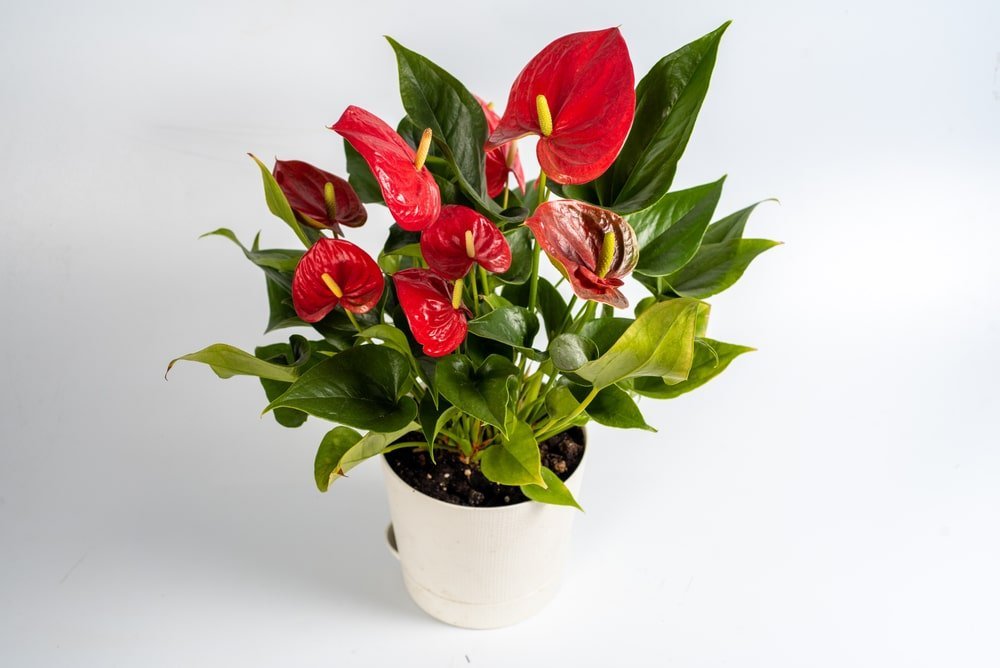
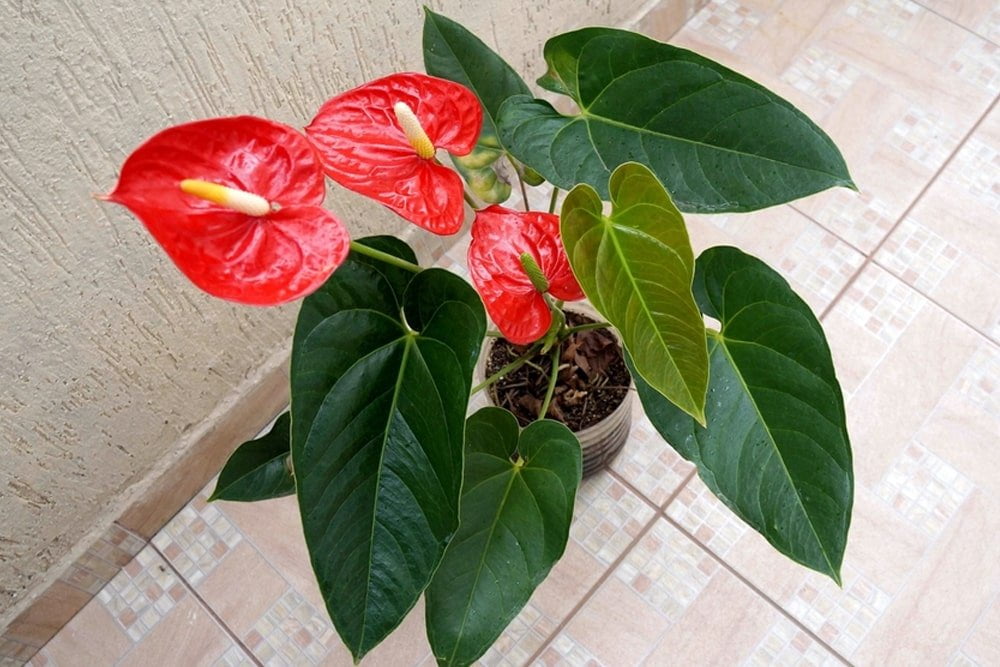

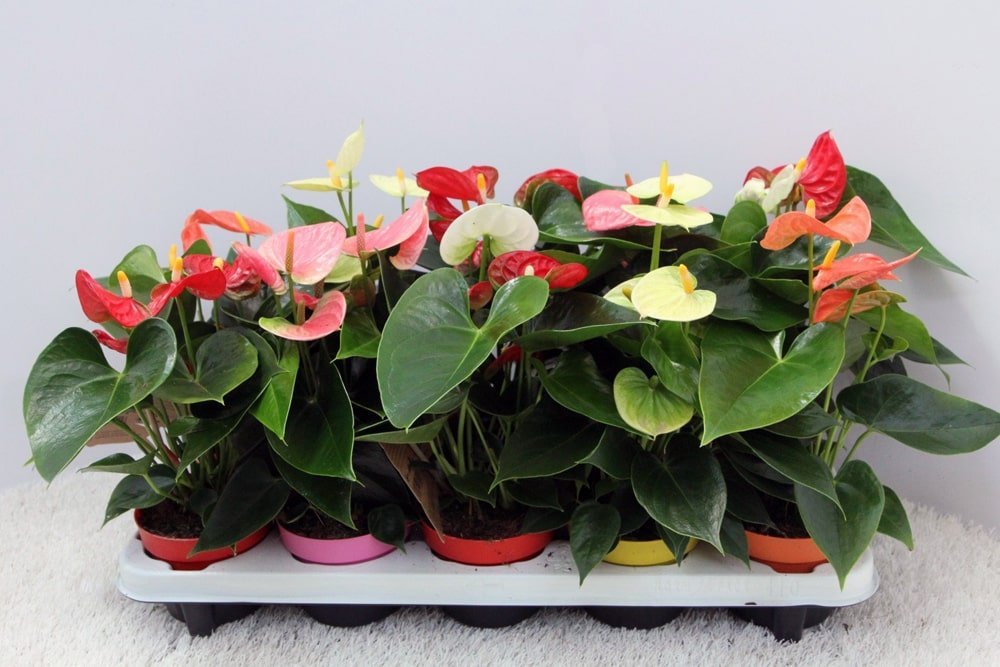
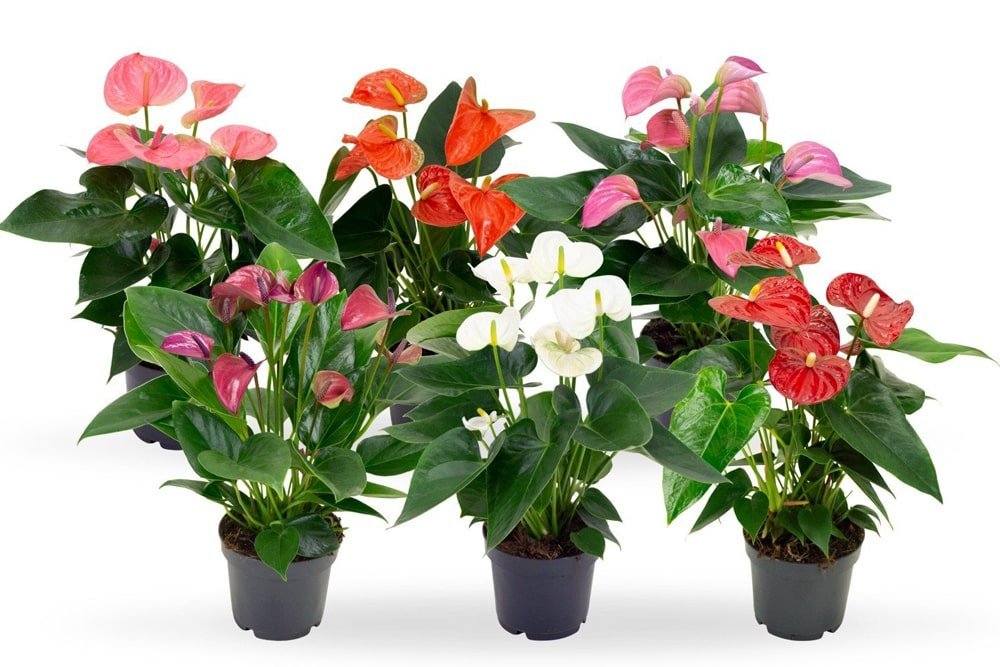
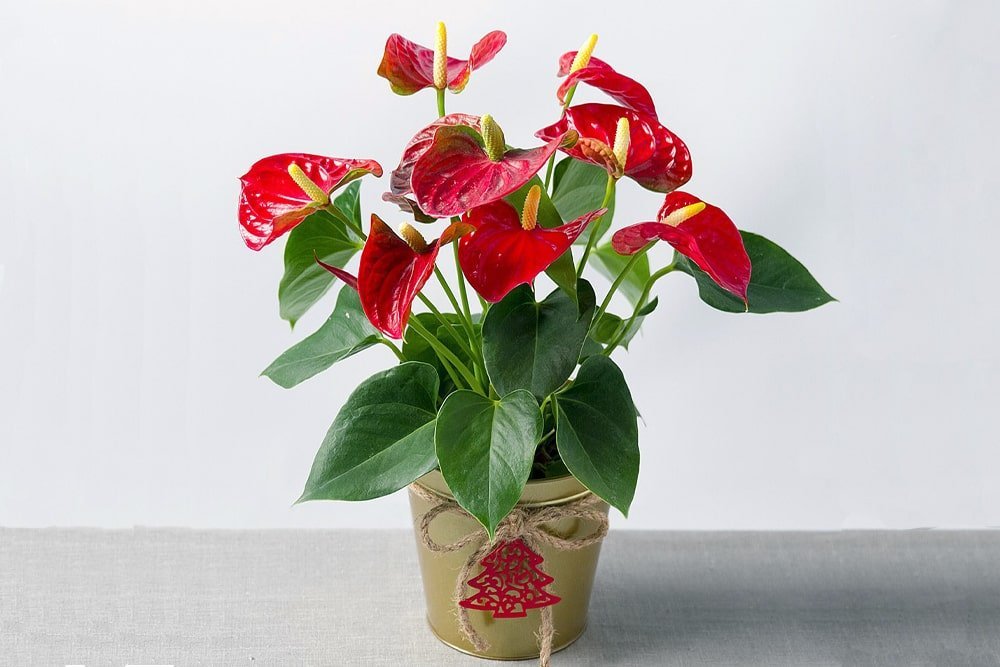


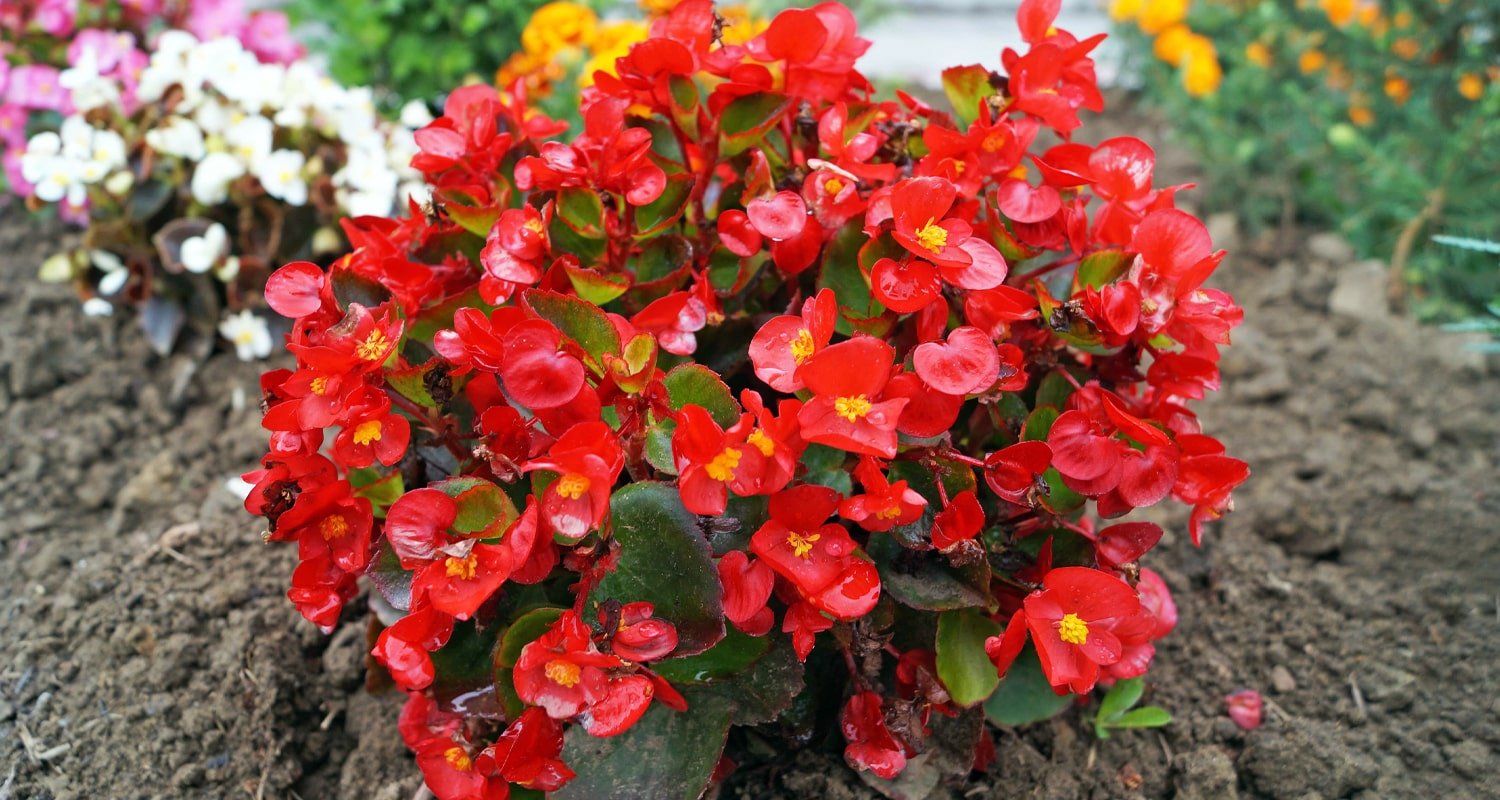
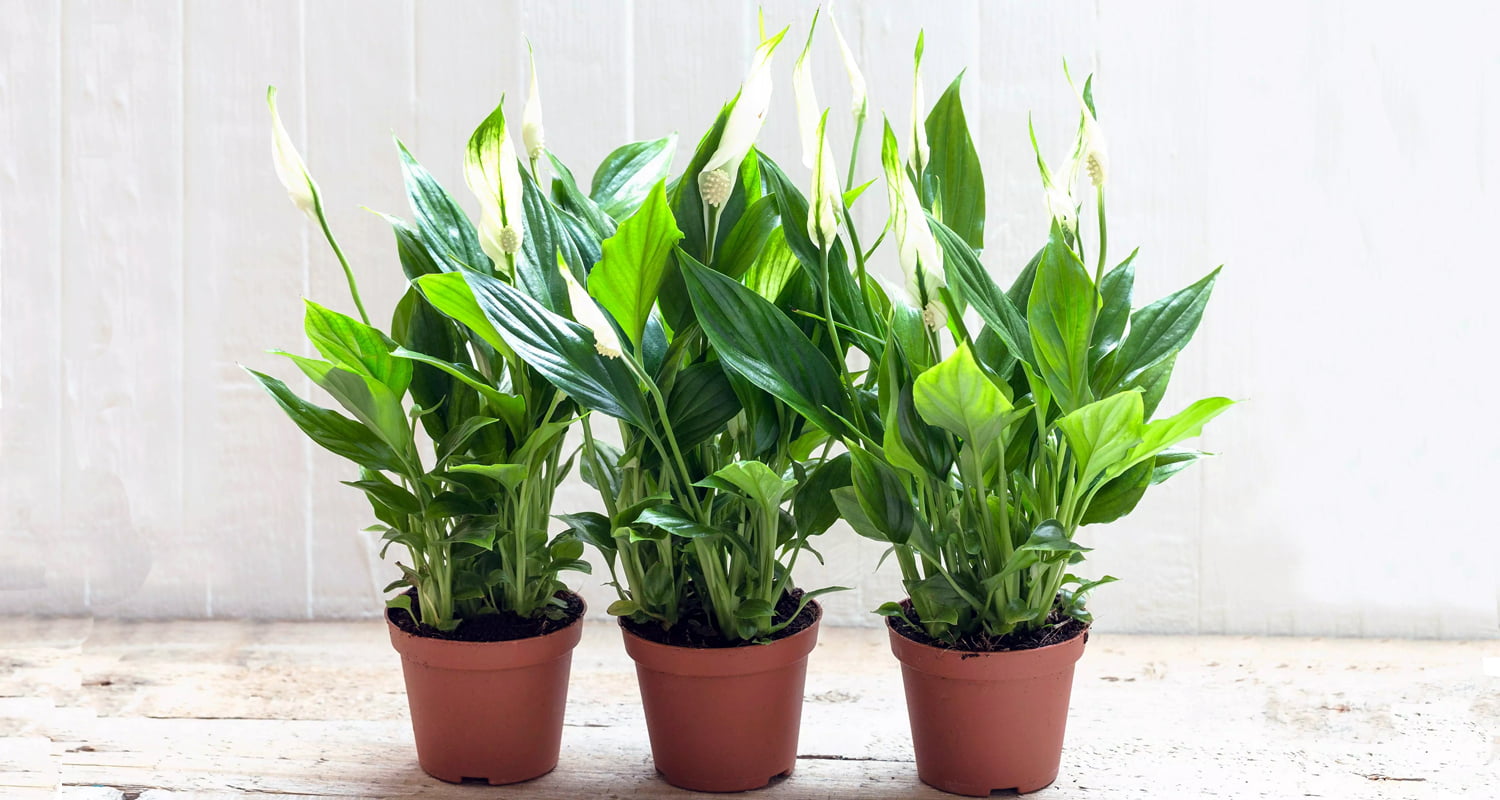
No comment